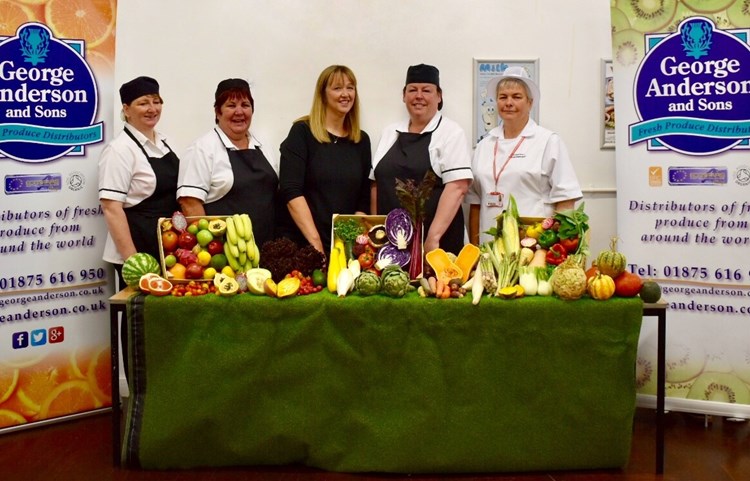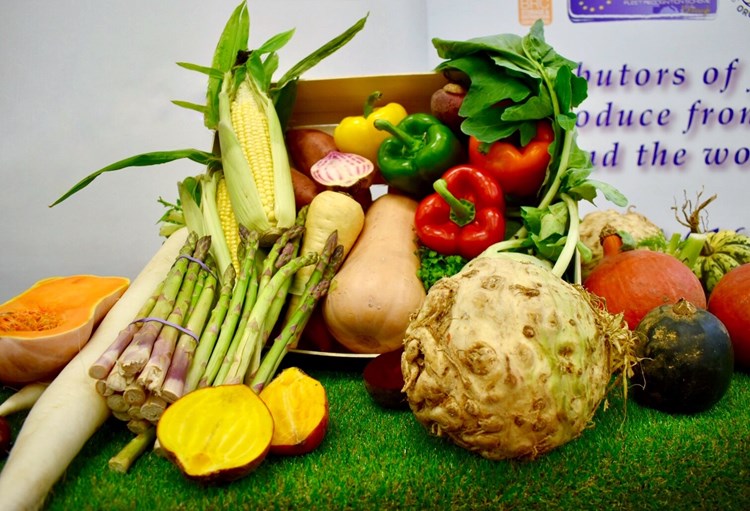East Lothian supplier thinks local
Family business George Anderson & Sons has supplied fresh produce across the Central Belt of Scotland for the last 35 years. The business was originally opened by George Anderson in Musselburgh, and for the last 15 years has operated out of a purpose-built warehouse in Macmerry, East Lothian.
From the Scottish Borders to Paisley to Arbroath, George Anderson & Sons supplies local authorities, universities, NHS hospitals, restaurants, sandwich bars – “anybody and everybody”, as General Manager Mike Robertson puts it. The business owns and runs a fleet of 23 vehicles to supply their customers with local produce, which they pick up from nearby farms.
“Over the last five years we’ve returned back to trying to source as much local produce as we possibly can,” says Mike. “A high percentage of our produce would be picked up within a 25-mile radius of the warehouse. Our strawberries come from Blacketyside Farm, which is directly across the Firth of Forth. All our potatoes are from a farm that’s about two miles away. And the same with our cabbages, they’re all coming from Haddington. We’re very lucky that we’re in the garden of Scotland.” Susan Sinclair with catering staff from Clermiston Primary School in Edinburgh
Susan Sinclair with catering staff from Clermiston Primary School in Edinburgh
Good food onto school plates
George Anderson & Sons has supplied local authorities for the last 21 years, meaning that their produce is finding its way into schools that serve Food for Life meals. As people have become more conscious about where their food has come from, Mike says that the general consensus among their local authority customers is that the more local produce they can get, the better. The Food For Life Scotland scheme supports local authority award holders to get locally-sourced, seasonal produce into their school meals. And suppliers like George Anderson & Sons consider locality and seasonality when sourcing their own suppliers.
“Our egg supplier is from Midlothian now, and we’ve just taken on another bread supplier in Edinburgh,” says Mike. “These are all companies that are ultimately family businesses; they’re not multinationals, they’re local businesses. When we’re picking up produce from the bakery, we’re doing that in a vehicle that’s been delivering to schools just around the corner. There’s fewer food miles, there’s less impact on the environment and everybody’s a winner.”
George Anderson & Sons is also part of a Soil Association Scotland-led Rural Innovation Support Service (RISS) group, which is exploring how to get more local food onto Scottish school plates. The group brings together school caterers who design menus, local authority procurement and economic development officers, vegetable wholesalers, farmers and members of Soil Association Scotland’s Food for Life team. They're looking at solutions in Edinburgh, the Borders and East and West Lothian, and will share these with interested local authorities across Scotland.
Telling pupils about fresh, Scottish ingredients
Mike says that the role of George Anderson & Sons is more than simply supplying produce: “It became evident that our role as a fruit and veg supplier is not just to be supplying schools with fruit and veg, but we also need to be doing a bit of education as well. We realised there are a lot of schools we’re delivering to where some of the children haven’t seen a strawberry before.”
Susan Sinclair at George Anderson & Sons takes a fruit and veg roadshow into schools. She uses fresh ingredients to create a beautiful display in the school hall, before the pupils join her for an assembly. “We show them what kind of fruit and veg is out there that is actually grown in Scotland that they can be tasting and eating to improve their palate,” says Mike. “Kids in Britain are still not eating what they should be eating, and we see our role as more educational as time goes by.”
 Fresh produce on display at Clermiston Primary School
Fresh produce on display at Clermiston Primary School
The school pupils can look at, touch and taste the produce that Susan takes into the school. They learn names of things they don’t recognise. They don’t always like the food they taste, but most of them will try it, which is the goal. “Some of them don’t look or don’t join in,” says Susan, “but it’s so when they go to the supermarket they can say ‘I know what that is! Can we try it?’”
To begin with, Susan was going into schools about once a month. Now, there are roadshows every week. Word is getting out around schools that it’s a brilliant workshop, meaning that it’s in increasing demand. It’s good news for George Anderson & Sons, too. It’s another string to their bow, which they can include when they go for new tenders.
“We’ve had feedback that the kids go back to their classrooms talking about it and what they saw and tasted. They’re excited about it and that’s how it should be.”

